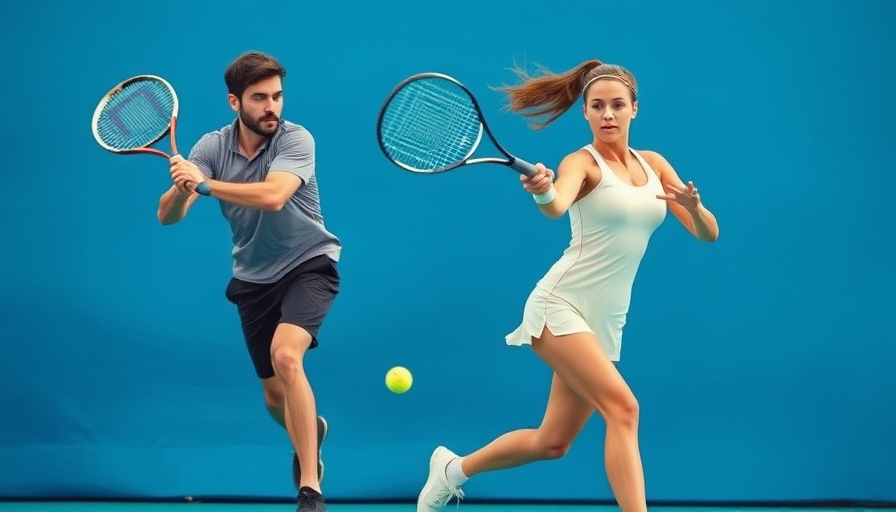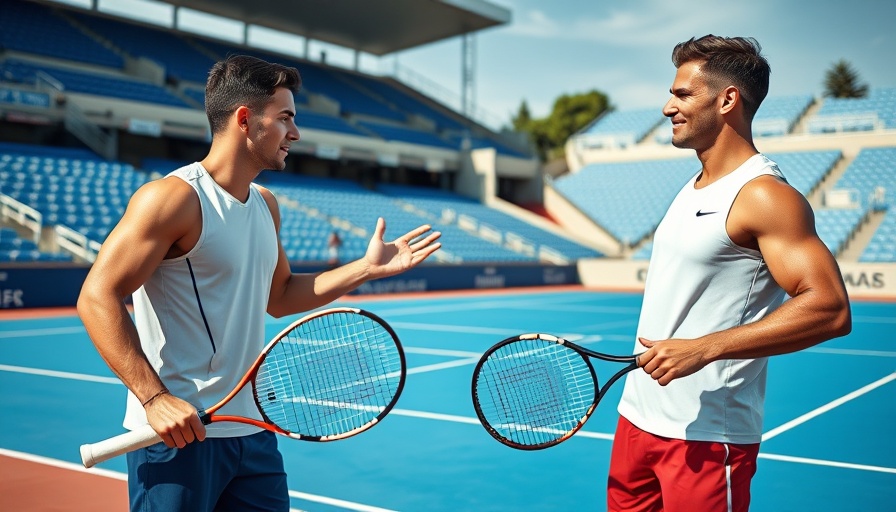
Unlocking Power: The Key to a Powerful Two-Handed Backhand
If you've ever struggled with generating power on your two-handed backhand, you’re not alone. Many players grapple with hitting the ball harder, especially during crucial match moments. The good news is that there are techniques to transform your backhand from a mere stroke to a powerful weapon, and it starts with one crucial element: shoulder rotation.
In 'How to add Power to the Two Handed Backhand', the discussion dives into essential techniques for generating power in tennis, exploring key insights that sparked deeper analysis on our end.
Understanding the Mechanics of Shoulder Rotation
When executing a two-handed backhand, regardless of whether you’re in a closed or open stance, shoulder rotation is essential. Think about it like this: Imagine you’re throwing a medicine ball against a wall. The motion doesn’t just start and stop; it flows through. Just like that throw, your shoulder movement should drive through the contact point of the ball.
The first step to executing an effective two-handed backhand is to align your body correctly. Start with your chest facing sideways to your opponent's side. As you prepare to swing, keep your shoulders ready to release that imaginary medicine ball forward. But here’s the catch – many players stop rotating prematurely. They might only rotate their shoulders by 20 or 30 degrees, which lacks the power needed for a strong return. Instead, fully commit to your rotation; aim to have your right shoulder facing the back fence upon completion of the swing.
Why Completing Your Rotation Matters
It’s vital to rotate past the point of contact. When you do, your racket maintains acceleration through the ball contact, creating a smoother power output. In contrast, stopping short means you're missing out on generating effortless power. When executed properly, this motion not only maximizes your backhand power but helps to strike consistently – a game-changer for your matches.
Practical Tips to Enhance Your Two-Handed Backhand
Here are three tips to help you improve your technique and power:
- Practice the Medicine Ball Throw: Spend time just throwing a medicine ball to understand the shoulder rotation pattern that’s needed for power. Focus on completing the rotation.
- Visualize Your Motion: During practice, constantly visualize throwing your shoulder through the ball. If you can mentally connect with the movement, your body will adapt and follow suit.
- Drills for Consistency: Work on drills that emphasize shoulder rotation. Using a partner or a wall, return balls while focus on completing your shoulder rotation.
The Bigger Picture: Connecting Skills to Strategy
Beyond just technique, think about how this refined power impacts your game strategy. A powerful backhand can open up the court, making it harder for your opponents to anticipate your shots. Furthermore, as players develop stronger shots, they gain confidence, elevating their overall game performance. That boost can lead to new strategies on the court, such as playing more aggressively or placing shots with precision.
Facing Challenges and Overcoming Common Misconceptions
Many youth and amateur players shy away from emphasizing shoulder rotation due to misconceptions that power comes solely from arm strength. This couldn’t be further from the truth. In fact, focusing solely on arm strength can lead to injury and inconsistency. It’s all about the fluidity of motion, where your body works harmoniously to create power instead of forcing it. Recognizing this misbelief is the first step towards a truly effective two-handed backhand.
Conclusion: Embrace the Power of the Backhand
Your two-handed backhand isn’t just a defensive stroke; it's a key element in your tennis arsenal that, when executed correctly, can propel you to new heights in your game. Take the time to practice your shoulder rotation, visualize your movements, and watch as your confidence and performance soar. Don’t overlook the importance of this simple adjustment; it’s the key to unlocking your potential on the court.
 Add Row
Add Row  Add
Add 




Write A Comment